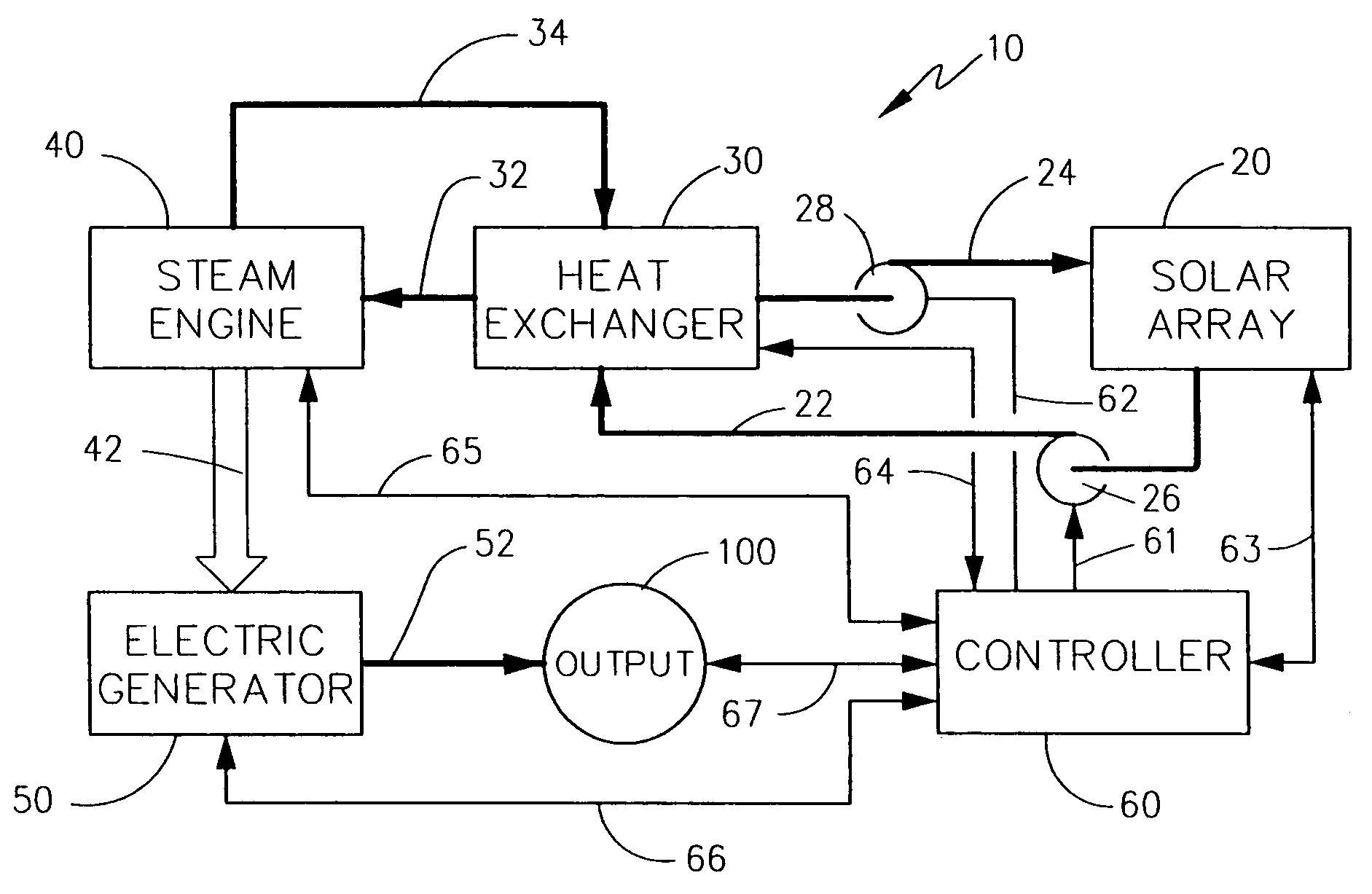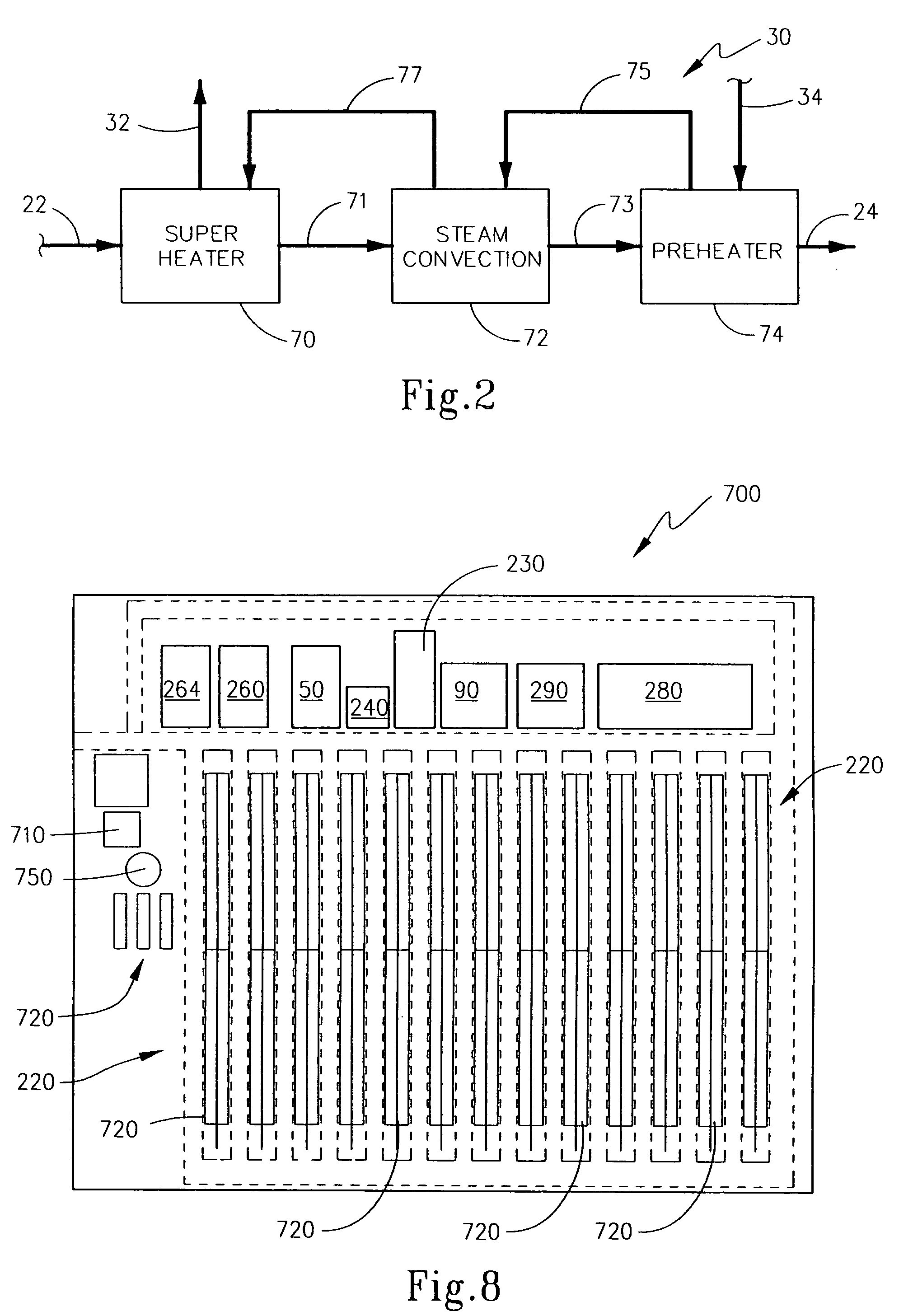Electric generation facility and method employing solar technology
a technology of solar energy and electric generation, applied in the field of energy sources, can solve the problems of direct heating, severe drawbacks of chemical plants, and potential ecological impact of altering the natural flow of rivers
- Summary
- Abstract
- Description
- Claims
- Application Information
AI Technical Summary
Benefits of technology
Problems solved by technology
Method used
Image
Examples
Embodiment Construction
[0043]The present invention broadly concerns electric generation systems and stations to produce electricity for supply to a power grid. More particularly, the present invention is directed to a solar powered electric generation system or station. The present invention particularly concerns an electric generation station and method employing solar power in conjunction with elevated water storage so as to supply electricity during both day and night or to supply electricity at times of high peak demand.
A. Simplified Systems
[0044]In order to introduce the electric generation station according to the present invention, reference may be made first to FIGS. 1(a) and 1(b). In FIG. 1(a), a diagram of a simplified electric generation station is illustrated. Here, electric generation station 10 includes a solar array 20 that is provided with a transfer fluid that is adapted to be heated by incident solar radiation, as is known in the art. Solar array 20 is in fluid communication through suit...
PUM
 Login to View More
Login to View More Abstract
Description
Claims
Application Information
 Login to View More
Login to View More - R&D
- Intellectual Property
- Life Sciences
- Materials
- Tech Scout
- Unparalleled Data Quality
- Higher Quality Content
- 60% Fewer Hallucinations
Browse by: Latest US Patents, China's latest patents, Technical Efficacy Thesaurus, Application Domain, Technology Topic, Popular Technical Reports.
© 2025 PatSnap. All rights reserved.Legal|Privacy policy|Modern Slavery Act Transparency Statement|Sitemap|About US| Contact US: help@patsnap.com



